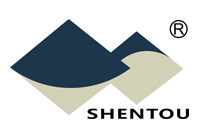CHINA AUTOMOTIVE SUPPLIER QUALITY MANAGEMENT BRIEFING
07/06/2019
Vol. 3, No. 7, July 2019

① QUALITY CHALLENGES & SOLUTIONS WITH YOUR SUPPLIERS IN CHINA
Case study of quality issues in product development,
production, packing & transportation (II)
Case two: Quality issues in the development, production, packing and transportation of aftermarket brake discs
While the previous discussions addressed the quality issues with regard to aftermarket brake drums, we now turn our attention to the issues with aftermarket brake discs (rotors).
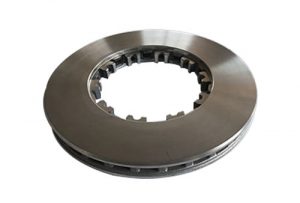 Based on our experiences working with the brake disc factories in China, over 95% of the supplies are typically in customers’ private labels with special designs, and the rest of them are with neutral packages. With the maturity of the brake disc manufacturing in China, the qualities of the products themselves could be quite stable, yet issues with the packing as well as in transportations are not uncommon.
Based on our experiences working with the brake disc factories in China, over 95% of the supplies are typically in customers’ private labels with special designs, and the rest of them are with neutral packages. With the maturity of the brake disc manufacturing in China, the qualities of the products themselves could be quite stable, yet issues with the packing as well as in transportations are not uncommon.
Let us first look at the typical process with the packing and transportation of brake discs:
Readying finished products for packing → Marking → Cleaning →Drying → Anti-rust coating → Placing in plastic bag → Placing in box → Adding accessories if required → Stacking on pallets → Shrink-wrapping → Loading for shipment.
What are then the factors contributing to quality issues in packing and transportation? Our experience and observation over the past decade show that the following issues are the top complaints:
●The boxes are not strong enough or the discs are not properly packed in the boxes, leading to box damage during handling and transportation;
●The pallets or the shrink wraps are not strong enough so boxes are damaged from pallet tilting during loading and unloading;
●The printed colors of the boxes are different even among the same batch of shipment;
●Marking on the disc’s external surface are incorrect;
●Disc accessories are missing.
Let us address each of the issues in details.
Issue #1, the boxes are not strong or disc packing in the box are incorrect resulting in box damage in transit.
Case analysis: When reviewing the more serious quality complaints on damaged boxes for brake discs, we believe the reasons are usually the following:
A. The key to the strength of the boxes for brake discs is their design and the material used, which are usually the primary source of the complaints. Based on the material used, boxes could be made of corrugated paper or single layer cardboard. Regular paper boxes could consist of 3, 5 or 7 layers of paper including inner sheet, corrugated sheet, inner liner, and top sheet. The inner and top sheets could be in paperboard and kraft paper, and the inner liner could be in corrugated paper. For the corrugated paper, universally there are four corrugated types, namely A, C, B, E.
Given the variety of the options, we should consider the design and materials carefully while taking into considerations the size, structure and weight of the disc as well as how the boxes will be stacked on pallets. While most factories choose the center-open box type for cost reduction and ease of packing, there should be clear requirements on the strength (gram) of the inner and top sheets. Typically the top sheet should be between 200g-300g, and the inner sheet should be 100g-150g, whereas the corrugated paper should be 75g-100g.
B. Based on our experience, the three representative structures of brake discs are type H, T and I, among which the T type creates the most problems for the boxes. With this T type structure of one big end and one small end, the box with brake disc inside would easily tilt on pallets and then collapse when pressure on the boxes is applied unevenly. To avoid the risks of collapse, it is advised to add a piece of plywood, with 3-5mm thickness and the same size as the big disc surface, on the side of the small disc end, thereby preventing the box from tilting and collapsing due to the asymmetry structure of the brake disc.
(to be continued)
By Felix SS YUAN
② CRITICAL FAILURE MODES / QUALITY CONTROL POINTS IN FOCUS
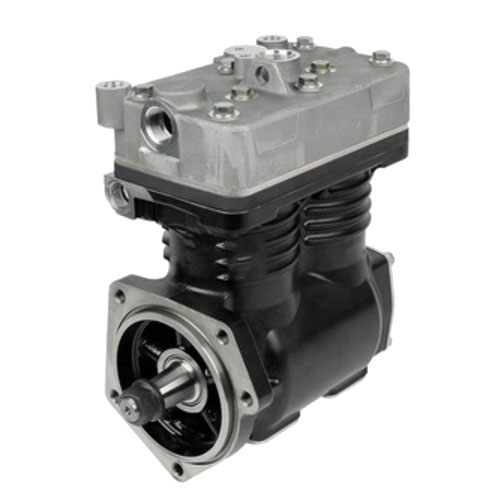
Air Brake Compressor for Commercial Vehicles
Air brake compressors on commercial vehicles, construction machinery and agricultural equipment provide compressed air with pressure to activate the vehicle air brake and auxiliary systems in order to effect the vehicle braking. It is also used for air horn, clutch boosting, speed boosting and emergency tyre inflation. It is an important external component for commercial vehicle engines and consists of a cylinder head and a crankcase module.
Primary failure modes:
1. Failure to pump air or slow pumping
● The compressor fails to load properly or the loading solenoid valve malfunctions
● Control board of the compressor malfunctions, so the solenoid fails to get the electricity due to abnormal output voltage from the compressor
● Inlet vale damaged or jammed
2. Insufficient air pressure
● Air pressure meter malfunctions
● The drive belt between the engine and compressor becomes loose or the pipe between compressor and air reservoir tank broken or leaking
● Loose sealing of compressor exhaust valve plates
Typically, over half of the quality issues are due to the above two key reasons.
Key quality control points:
1. Check the inspection instructions for outsourced components, such as loading solenoid valve, inlet valve, oil & water separator, air filter, exhaust valves, to verify the inspection frequencies and standards used.
2.Check the availability of assembly and inspection instructions on the production lines, and if the productions and inspections are in compliance with operation instructions.
By Felix SS YUAN
③ KEY CONCEPTS & PRACTICES IN SUPPLIER QUALITY MANAGEMENT
PPAP
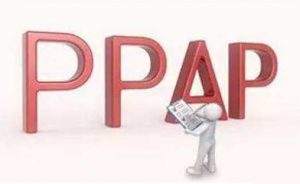 PPAP stands for Production Part Approval Process. It is one of the five Quality Core Tools for the automotive industry and an important part of the Advanced Product Quality Planning (APQP) approach. PPAP is an output of Phase 4, Validation of Product and Process, of the APQP process.
PPAP stands for Production Part Approval Process. It is one of the five Quality Core Tools for the automotive industry and an important part of the Advanced Product Quality Planning (APQP) approach. PPAP is an output of Phase 4, Validation of Product and Process, of the APQP process.
Originally developed by the Automotive Industry Action Group (AIAG), PPAP defines the approval process for new or revised parts, or parts produced from new or significantly revised production methods. The PPAP manual contains detailed information, guidelines and sample documents useful for completing the process requirements. The resulting PPAP submission provides the evidence that the supplier has met or exceeded the customer’s requirements and the process is capable of consistently reproducing quality parts.
④ CHINA INDUSTRY & MARKET UPDATE
Cost of raw materials:
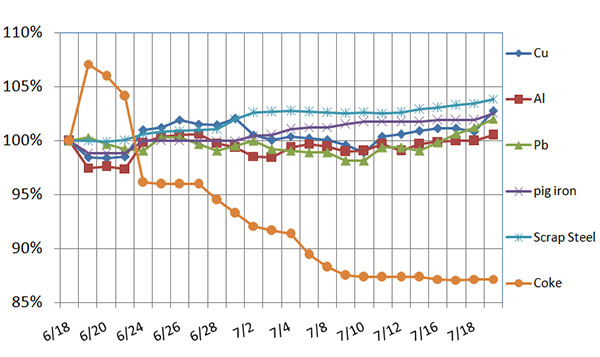
Exchange rates:
![]() USD/RMB: 1:6.8805
USD/RMB: 1:6.8805
![]() EEUR/RMB: 1:7.7488
EEUR/RMB: 1:7.7488
![]() RUB/RMB: 1:0.1084
RUB/RMB: 1:0.1084
July 2019
The above information is for reference only
⑤ IT HELPS TO KNOW...
Notable trade events in August
 The 9th China International Automotive Interiors and Exteriors Exhibition (CIAIE)
The 9th China International Automotive Interiors and Exteriors Exhibition (CIAIE)
Date: 15th Aug. to 17th Aug.
Venue: Shanghai New International Expo Center, Shanghai
Website: www.ciaie.com
 The 18th China International TIRE EXPO 2019 (CITEPO)
The 18th China International TIRE EXPO 2019 (CITEPO)
Date: 19th Aug. to 21st Aug.
Venue: Shanghai World Expo Exhibition & Convention Center, Shanghai
Website: www.citexpo.com.cn
SHENTOU SUPPLY CHAIN MANAGEMENT CO. LTD. is a Shenzhen, China, based company serving international automotive clients in the implementation of their China strategies and programs. CHINA AUTOMOTIVE SUPPLIER QUALITY MANAGEMENT BRIEFING is a bi-monthly newsletter published by Shentou to address the specific and unique quality challenges and concerns international automotive companies face with suppliers in China. Comments are welcome at qms@shentou.com. Click here to subscribe.
